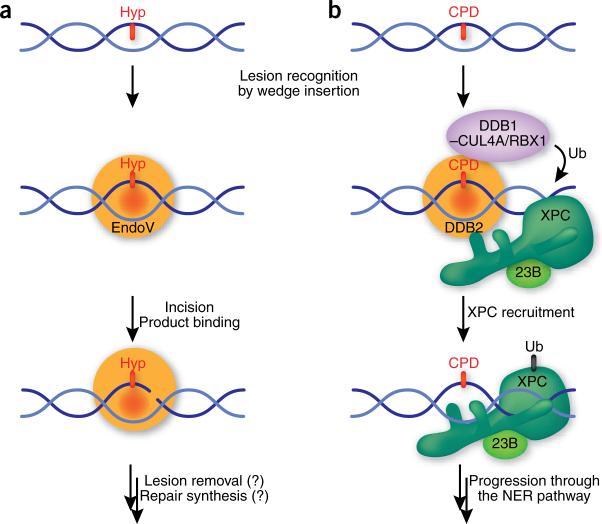Figure 1.
Recognition and repair pathway initiation of slightly distorting DNA lesions. (a) EndoV recognizes deaminated bases, in particular hypoxanthine (Hyp), by inserting a wedge into the DNA helix and binding the lesion in a specific pocket. The catalytic activity of EndoV makes an incision in the phosphodiester bond located one nucleotide 3′ to the lesion. EndoV remains bound to the incised product, allowing the recruitment of hitherto unknown downstream factors and completion of the pathway without exposure of the nick. (b) DDB2 binds to CPD (and other) lesions by inserting a wedge into the DNA helix to extrude the modified base into a shallow binding pocket. Binding of the DDB2–DDB1 complex to DNA locates the CUL4A/RBX1 ubiquitin ligase in proximity of the lesion, leading to the ubiquitination (Ub) of XPC and DDB2. This modification weakens the DNA binding activity of DDB2, but not that of XPC, and allows XPC–RAD23B (23B) to replace DDB2–DDB1 on the damaged site and progression through the NER pathway.

